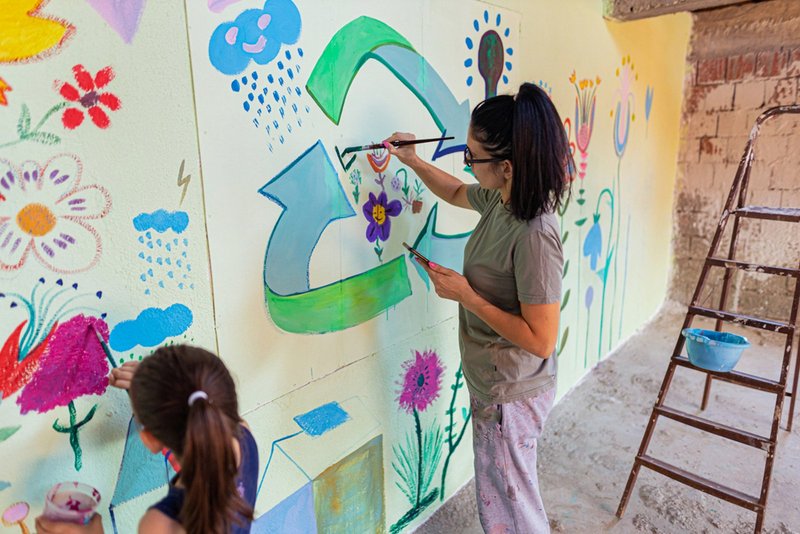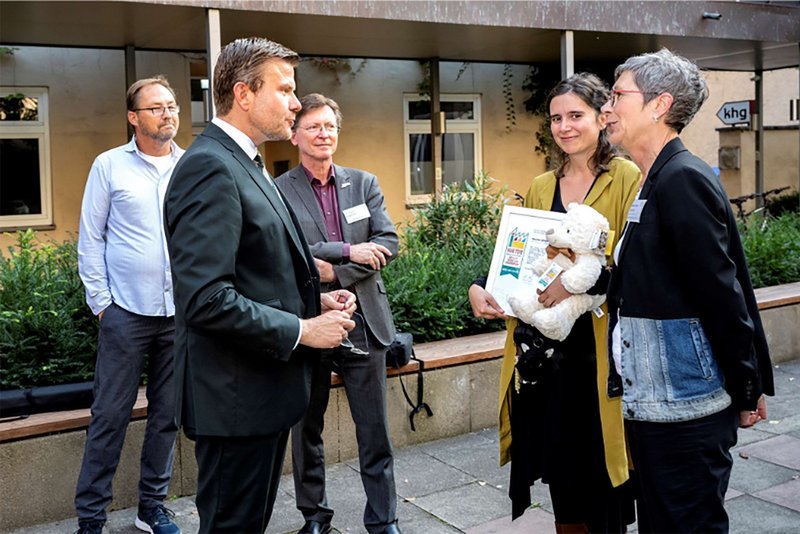
Sustainability: A reality check
Interview with Sonia Sanchez, STAC
The Toy and game business has made some strides in the past decade in improving the sustainability of the industry. Progress has been made across several areas – for example, FSC certification has become standard for many Games companies. It ensures that the forest where the raw materials derive from is being managed in a way that preserves biological diversity. Completely unnecessary plastic has disappeared from many products, plastic bags have been removed, blister packs with a sheet of plastic covering and protecting the toy inside are less common now than they were. Recycled plastics are also now fairly common on toy aisles.
The industry is responsible for future generations

However, there is a strong feeling for some people that the toy industry could and should be doing so much more on this critical area in order to ensure that future generations of children can enjoy all the joy and benefits of play without having to do so in a worse environment and climate. Sonia Sanchez, Co-founder of STAC, Sustainable Toys Action Consulting shared her thoughts as follows:
“The toy industry is lacking leadership. So far, it hasn’t been able to establish a clear vision for a sustainable future, which is essential to guide decision-making and focus energy and resources. As a result, the industry does not have a collective strategy or even a clear definition of what sustainability means for toys.”
The risk of mass consumer rejection of synthetic plastics
Sustainability and environmental impact are commercial considerations as well as ethical ones. If you run a SWOT analysis of the toy industry today, one of the biggest identifiable risks is the potential for mass consumer rejection of toys made from synthetic plastics. Toys featuring synthetic plastics constitute the majority of toys sold today. This is therefore a massive risk factor for toy companies beyond just wanting to leave the planet in a habitable state for future generations of children and toy companies to enjoy.
Bioplastics awaits the breakthrough

In order to take a balanced view, we should consider that there are also a number of up and coming toy companies who are utilizing Bioplastics in their products, as well as moves and initiatives by the major market leading toy companies to introduce Bioplastics.
According to Sonia Sanchez “The most common challenges we discuss with companies involve different aspects of adopting lower-impact polymers, such as recycled and bio-based plastics. One significant challenge is consumer price sensitivity, which is difficult to reconcile with the higher costs of bio-based plastics.”
On this topic there does seem to be a gap between the potential of Bioplastics and the current financials of introducing them en masse. When quoting Bioplastics from leading Toy factories, it is not uncommon currently to see costs as much as 50-60% higher versus oil derived plastics. Clearly in a price sensitive market such as the toy business, this level of cost is not commercially viable. However, this should not be seen as a ‘fait accompli’, with manufacturing materials, so much of the cost calculation is based on critical mass. It seems likely if not inevitable that consumer products in general, not just the toy business, will push Bioplastic materials to the point of mass adoption – the question is how quickly can we get there?
There are already more applications for bioplastic today
Sonia Sanchez feels that there is some misunderstanding of Bioplastics and the implications of utilising them:
“Bioplastics come in many forms. Many of them — referred to as "drop-in solutions" — are molecularly identical to traditional oil-based plastics, meaning they have the same properties. For example, bio-PE has properties identical to oil-based PE: it can be used with the same moulds, and its chemical and physical properties, as well as safety, are not compromised. Yes, at present, bioplastics are more expensive and may be prohibitive for large toys, but they are often affordable for many other toys where the material represents a small percentage of the overall cost.”
Sonia Sanchez stellt die Vorzüge von Bioplastics heraus: “Most bio-based plastics are made from agricultural by-products, so there is no significant loss of land for food production. For instance, bio-based PE is derived from the waste left after sugar is extracted from sugarcane. Bio-based plastics support circularity by utilising agricultural waste and reducing carbon footprints — huge advantages in today's world. Of course, markets can behave in strange ways, and there is potential for land diversion and deforestation, but this can be managed through regulation and independent certification. Currently, the percentage of land used to produce bio-plastic feedstock is minimal. To me, renouncing the environmental benefits of bio-based plastics based on a potential risk that can be managed—and that is far from materialising—seems unjustified.”
Bioplastics reduce carbon footprints

It appears to be the case that Bioplastic solutions for the toy business are potentially more accessible than many toy companies and toy people have realised to date. The suggestion that Bioplastics can be more easily utilised where plastic materials are only a minority element certainly seems to represent low hanging fruit – consider for example a board game which features FSC certified, sustainably sourced cardboard, but which has movers or playing pieces which are still currently produced form synthetic materials. Or perhaps doll accessories could be Bioplastics, even if producing the doll itself is not yet commercially viable.
Outlook on the growth of Bioplastics
An additional concern is the impact of other industries on the growth of Bioplastics. The toy business is relatively unusual in that a large proportion of market share is held by small and medium sized companies. It can be harder for these companies to push big initiatives because they lack the breadth of organisational resources, departments and people to focus on factors outside the normal day to day of the business. Whereas other industries, Fast Moving Consumer Goods for example, are much more dominated by larger players who will be finding the same risk of consumer rejection of synthetic plastics, and therefore will likely play a major role in facilitating the move to Bioplastics.
In analysing where the toy industry is right now with sustainability, it does appear that it has made some steps in taking the ‘low hanging fruit’ opportunities to improve the environmental footprint. It is now time to reach higher up for solutions that will take more work and necessitate some more transformational approaches.
Toys go Green
Spielwarenmesse 2025 is focussing on ‘Toys go Green’. Find sustainable toys and lots more information about the four categories: Made by Nature | Inspired by Nature | Discover Sustainability | Recycle & Create
Visit the special ‘Toys go Green’ from 28 January to 1 February 2025
in Hall 3C, B-42 and C-42, E-42 at the Nuremberg Exhibition Centre
About the Author
Steve Reece has worked in the Toy business for 25 years. Having previously worked for Hasbro managing iconic brands such as Monopoly, Play-Doh and Trivial Pursuit, Steve now runs a Consultancy company – Kids Brand Insight – helping Toy companies grow export sales, build robust diversified supply chain and recruit the right people.




